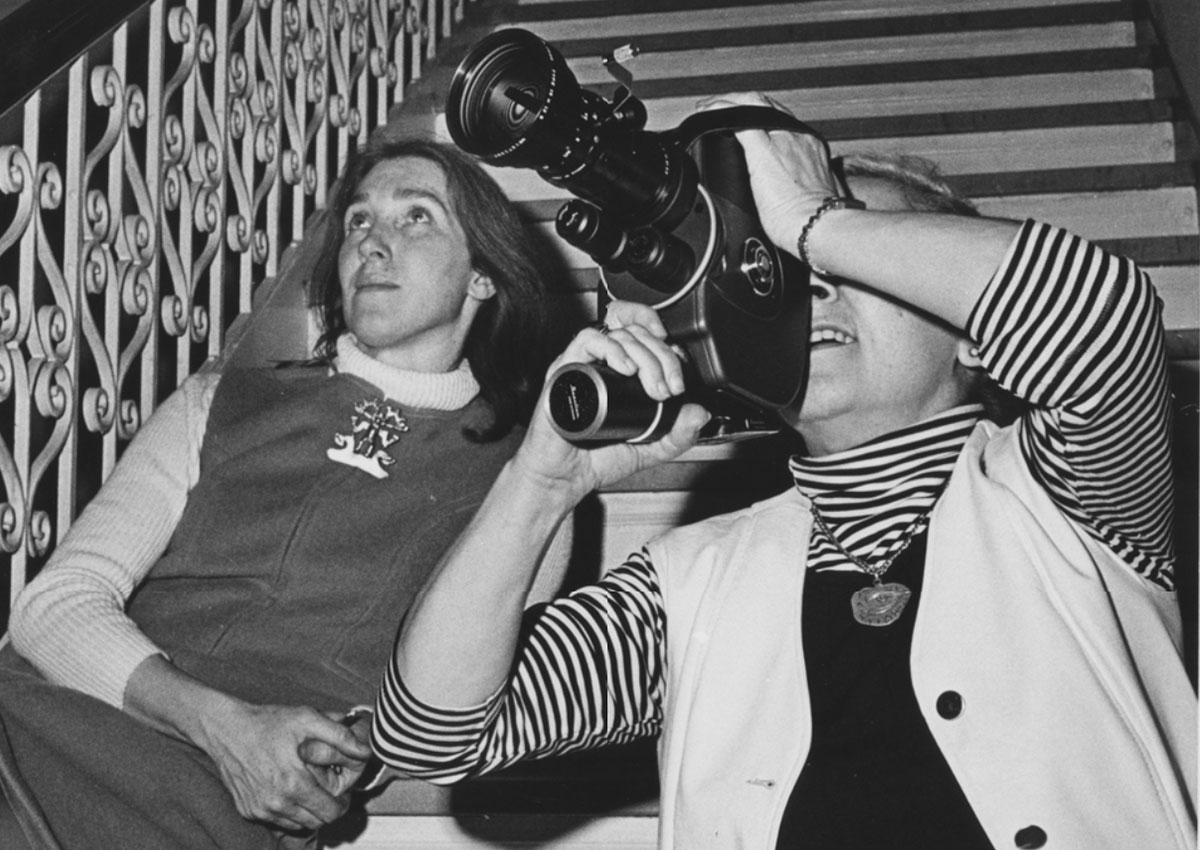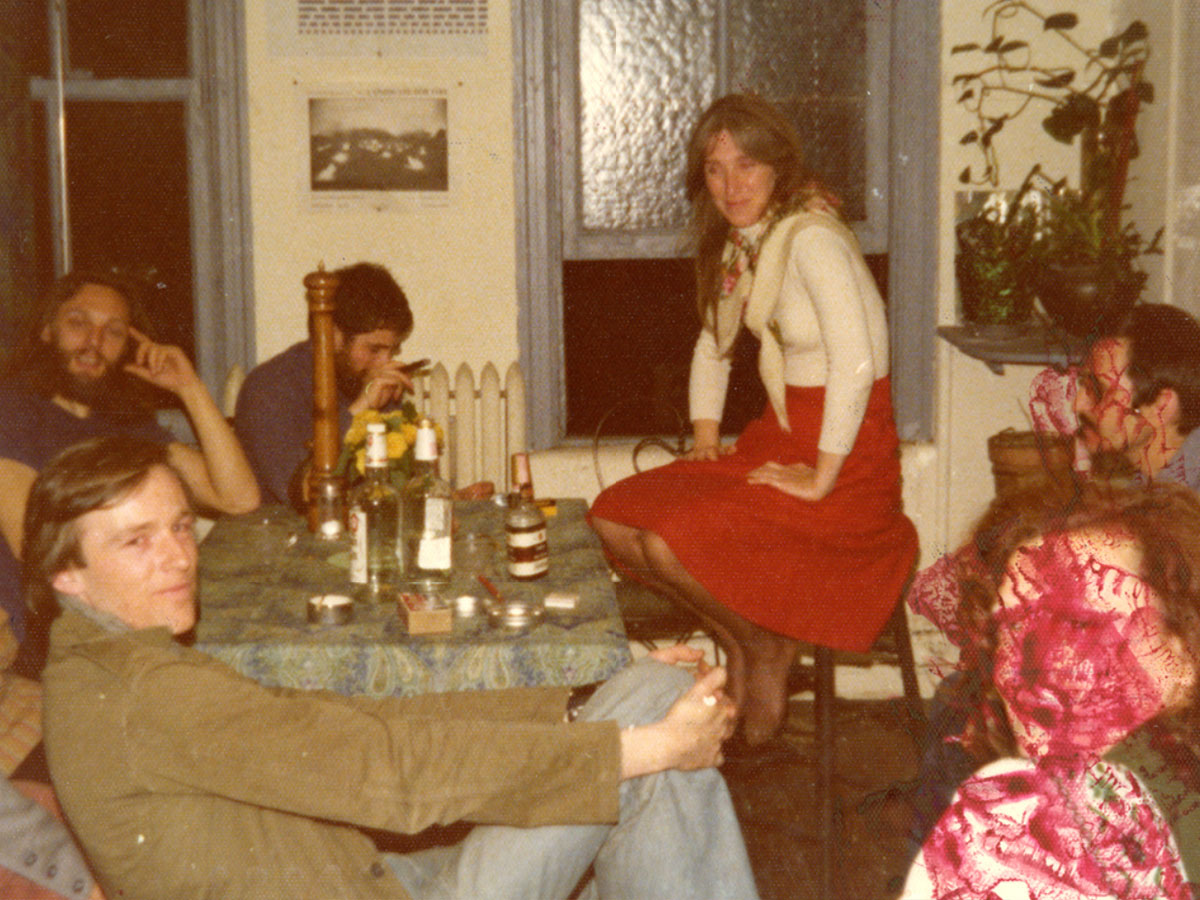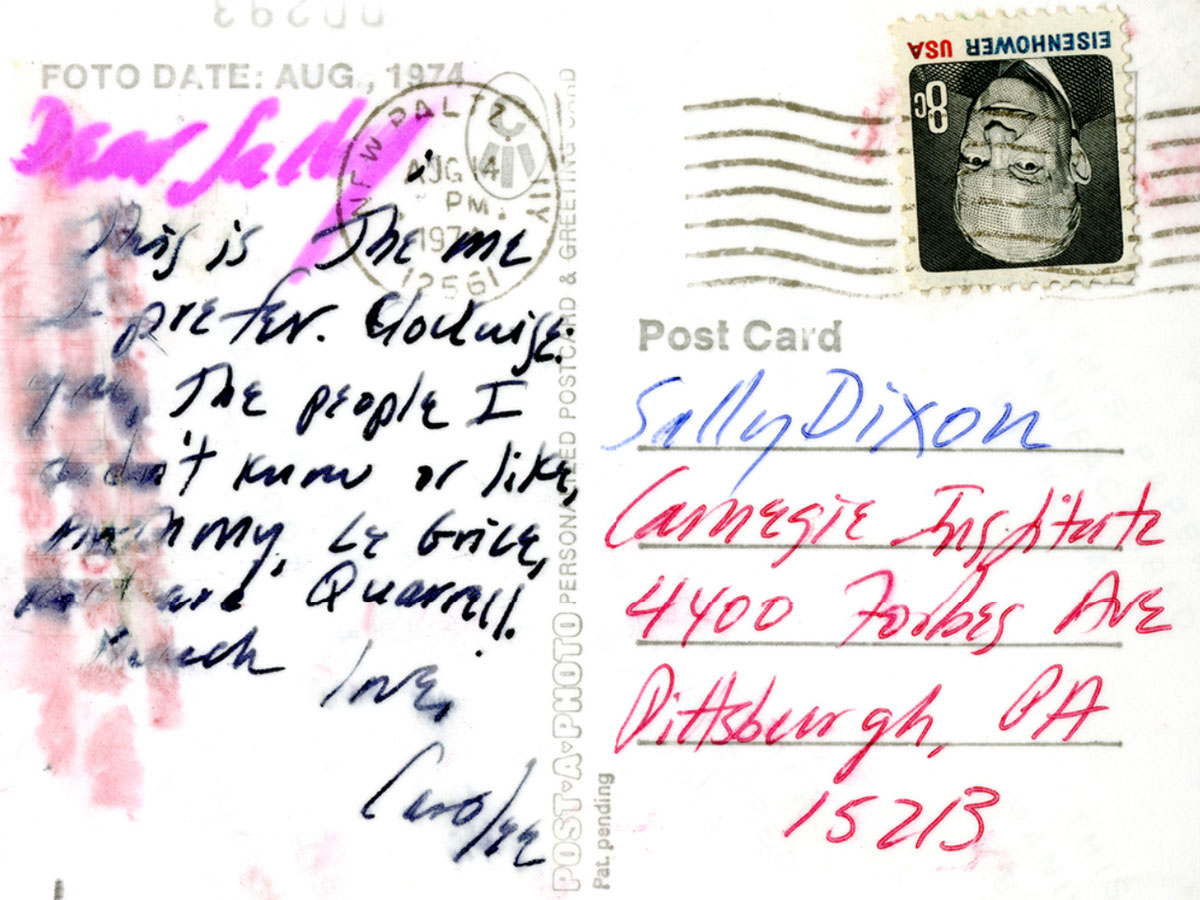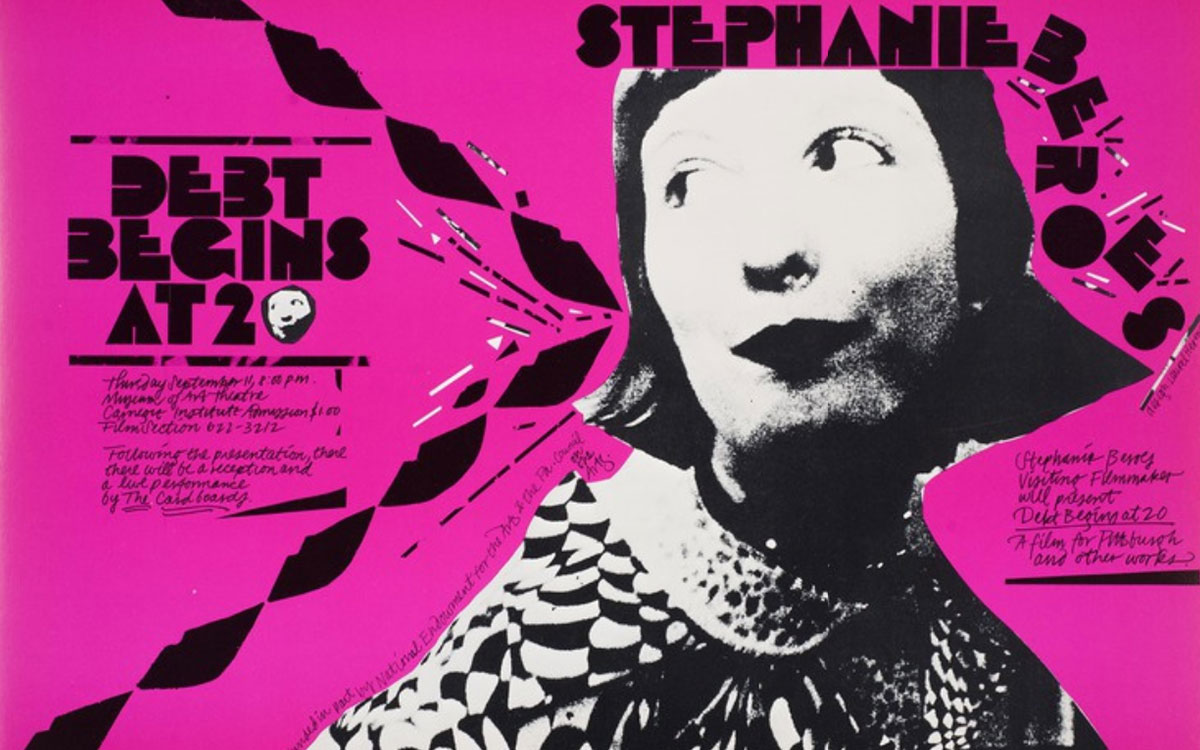The Carnegie Museum of Art Film Department, initially called the Film Program, was among the first of its kind when it opened in 1970. At the time, only New York and San Francisco had serious avant-garde film scenes (at the Museum of Modern Art, Anthology Film Archives in New York and the Pacific Film Archives in Berkeley). Our program began as a three-year venture but soon grew into a full-fledged and highly productive department garnering national and international attention.
Although the department was incorporated into our department of modern and contemporary art in 2003, time-based media remains an integral part of our collection, represented by nearly 1,000 works.

Sally Dixon founded our Film Section in 1970 with the support of then-director Leon Arkus. Born in 1932 in Seattle, Dixon was a Pittsburgh-based filmmaker with a passion for creating opportunities for audiences to watch films, learn from independent filmmakers, and gain access to equipment to produce work of their own.
Dixon advocated for artists by not only paying them honoraria for their work, but securing permission for them to shoot in restricted locations around Pittsburgh such as hospital operating rooms, the city morgue, and US Steel. Dixon hosted dinner parties for filmmakers and scholars in her home and was devoted to connecting people and building community.
Dixon left Carnegie Museum of Art in 1975 and was succeeded by her friend and colleague William “Bill” Judson, who was a film professor at the University of Pittsburgh. He served as the department’s director until 2003. Dixon eventually served as interim director of Film in the Cities in Minneapolis, Minnesota, where she died in November 2019.


The core of the Department of Film and Video was a program of screenings, which included the History of Film Series, Directors Series, Collection Series, and Visiting Filmmakers Series. The latter, also known as the Independent Film-Maker Series, was the lifeblood of the program. Filmmakers from all over North America and Europe traveled to Carnegie Museum of Art to give lectures, screen their films, and participate in discussions. During its first twenty years, more than 150 artists including Stan Brakhage, Robert Breer, Joan Jonas, Carolee Schneemann, Hollis Frampton, Roger Jacoby, Bruce Conner, Freude Bartlett, and Yvonne Rainer participated in the series.

Jonas Mekas—the “godfather” of American avant-garde film—was the first filmmaker to visit the museum when the program officially opened in 1970. During his visit, he screened excerpts from Diaries, Notes, and Sketches—Vol. 1 (1969), a monumental diary-collage of his personal life filmed over a period of 15 years. Having founded the Anthology Film Archives in New York, Mekas became a close friend and advisor to Sally Dixon. His screening was the first of many avant-garde events to follow, an area of film that remains a strength in Carnegie Museum of Art’s collection.

In 1975, William “Bill” Judson became the second and last director of the Department of Film and Video, working until the department’s discontinuation in 2003.
Under Judson’s leadership, the department directed more attention and resources toward video art. Between 1981 and 1988, Carnegie Museum of Art exhibited seven ambitious one-person video installations and acquired many of them for the collection in the hopes of elevating video art’s status in the field. Memorable moments include Steina Vasulka’s 360-degree mirrored Allvision (1976), where circling cameras transmit whatever they capture live onto monitors, and Dara Birnbaum’s wall-spanning Will-o’-the-Wisp (1985), a three-channel video installation.
Two group exhibitions organized by Judson—American Landscape Video: The Electronic Grove (1988) and Points of Departure: Origins of Video Art (1991)—challenged the art world’s dismissal of video art and encouraged its evaluation among other modes of artistic expression, like painting, sculpture, and photography.
You can explore the history of film and video at Carnegie Museum of Art through our digital archive, which can be found at records.carnegieart.org.
The Film and Video Archive at Carnegie Museum of Art contains more than 150 audio and video recordings of lectures and interviews, a searchable inventory of nearly 1,200 moving image artists, images from screening events, and the complete holdings of the Film and Video Makers Travel Sheet, a newsletter series created to promote film screenings and gigs.
